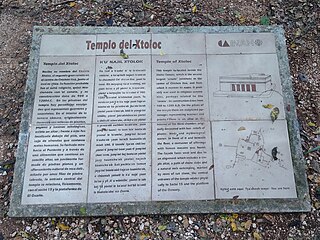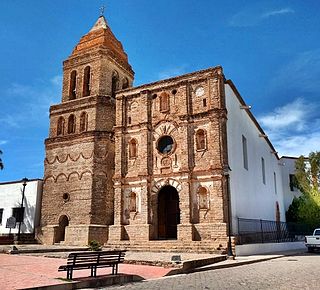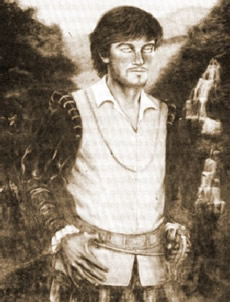
Durango, officially named Estado Libre y Soberano de Durango, is one of the 31 states which make up the 32 Federal Entities of Mexico, situated in the northwest of the country. With a population of 1,832,650, the 8th lowest of Mexico's states, Durango has Mexico's second-lowest population density, after Baja California Sur. The capital city, Victoria de Durango, is named after the first President of Mexico, Guadalupe Victoria.

Nayarit, officially the Estado Libre y Soberano de Nayarit, is one of the 31 states that, along with Mexico City, comprise the Federal Entities of Mexico. It is divided in 20 municipalities and its capital city is Tepic.

Sinaloa, officially the Estado Libre y Soberano de Sinaloa, is one of the 31 states which, along with Mexico City, comprise the Federal Entities of Mexico. It is divided into 18 municipalities and its capital city is Culiacán Rosales.

Acaxee was a tribe or group of tribes in the Sierra Madre Occidental in eastern Sinaloa and NW Durango. They spoke a Taracahitic language in the Southern Uto-Aztecan language family. Their culture was based on horticulture and the exploitation of wild animal and plant life. They are now extinct as an identifiable ethnic group.

The Tepehuán are an indigenous people of Mexico. They live in Northwestern, Western, and some parts of North-Central Mexico. The indigenous Tepehuán language has three branches: Northern Tepehuan, Southeastern Tepehuan, Southwestern Tepehuan. The heart of the Tepehuan territory is in the Valley of Guadiana in Durango, but they eventually expanded into southern Chihuahua, eastern Sinaloa, and northern Jalisco, Nayarit, and Zacatecas. By the time of the Spanish conquest of the Aztec Empire, Tepehuan lands spanned a large territory along the Sierra Madre Occidental. Tepehuán groups are divided into the Ódami, Audam, and O'dam, each with their own language, culture, and beliefs.
Tepehuanes Municipality is a municipality in the Mexican state of Durango. It is located in the North West of Durango at 25°12'"-26°25'"N 105°23'"-106°40'"W, at an elevation of about 1,830 meters (6000 feet).

The Constitution of Mexico does not declare an official language; however, Spanish is the de facto national language spoken by over 99% of the population making it the largest Spanish speaking country in the world. The government also recognizes 63 indigenous languages spoken in their communities out of respect, including Nahuatl, Mayan, Mixtec, etc.

There is universal agreement that some Mesoamericans practiced human sacrifice and cannibalism, but there is no scholarly consensus as to its extent.

Arizpe is a small town and the municipal seat of the Arizpe Municipality in the north of the Mexican state of Sonora. It is located at 30°20'"N 110°09'"W. The area of the municipality is 2,806.78 sq.km. The population in 2005 was 2,959 of which 1,743 lived in the municipal seat as of the 2000 census.

Francisco de Ibarra was a Spanish-Basque explorer, founder of the city of Durango, and governor of the Spanish province of Nueva Vizcaya, in present-day Durango and Chihuahua.

The Tepehuán Revolt broke out in New Spain in 1616 when the indigenous Tepehuán attempted to break free from Spanish rule. The revolt was crushed by 1620 after a large loss of life on both sides.

The Provincias Internas, also known as the Comandancia y Capitanía General de las Provincias Internas, was an administrative district of the Spanish Empire created in 1776 to provide more autonomy for the frontier provinces of the Viceroyalty of New Spain, present-day northern Mexico and the Southwestern United States. The goal of its creation was to establish a unified government in political, military and fiscal affairs. Nevertheless, the Commandancy General experienced significant changes in its administration because of experimentation to find the best government for the frontier region as well as bureaucratic in-fighting. Its creation was part of the Bourbon Reforms and was part of an effort to invigorate economic and population growth in the region to stave off encroachment on the region by foreign powers. During its existence, the Commandancy General encompassed the Provinces of Nueva Navarre, Nueva Vizcaya, Las Californias, Nuevo México, Nuevo Santander, Nuevo Reyno de León, Coahuila and Texas.

Francisco Tenamaztle, also Tenamaxtlan, Tenamaxtli or Tenamaxtle, was a leader of the Caxcan indigenous peoples in Mexico during the Mixtón War of 1540–1542. He was later put on trial in Spain. With the support of Bartolomé de las Casas he defended the justice of his cause by appealing to King Carlos I.
The Conquest of America: The Question of the Other is a book by Tzvetan Todorov first published in 1982, detailing Spanish colonials' contact with natives upon the discovery of the Americas.

The Spanish missions in the Americas were Catholic missions established by the Spanish Empire during the 16th to 19th centuries in the period of the Spanish colonization of the Americas. Many hundreds of missions, durable and ephemeral, created by numerous Catholic religious orders were scattered throughout the entirety of the Spanish colonies, which extended southward from the United States and Mexico to Argentina and Chile.

La Ferrería is an archaeological site located 7 kilometers south of the city of Durango, in the Mexican state of Durango, at the “Cerro de La Ferrería”, on the side of the Tunal River.

The Acaxee Rebellion was an insurrection against Spanish rule in Mexico by Acaxee Indians, in 1601. The Acaxee attempted to expel the Spanish from their lands, regain their independence, and retain their traditional culture which was threatened by forced labor and Jesuit missionaries imposed upon them by the Spanish. They killed about 50 Spaniards and shut down silver mining operations in their territory for two years. In 1603, a Spanish army with Indian allies defeated the Acaxee and captured and executed most of their leaders. Subsequent smallpox epidemics killed most of the surviving Acaxee.

Northern Mexico, commonly referred as El Norte, is an informal term for the northern cultural and geographical area in Mexico. Depending on the source, it contains some or all of the states of Baja California, Baja California Sur, Chihuahua, Coahuila, Durango, Nuevo León, Sinaloa, Sonora and Tamaulipas.
El Zape is a small town in the hills of the municipality of Guanaceví, in the state of Durango, in northern México. El Zape is the 3rd largest town in Guanaceví. El Zape postal code is 35440. It is located on the eastern side of the Sierra Madre Occidental, at an altitude of 1960 m (6430 ft).


















